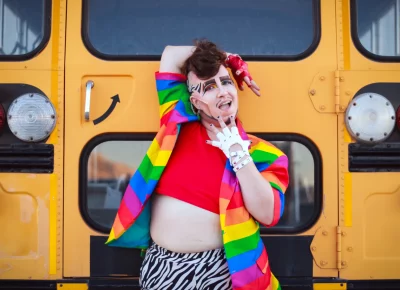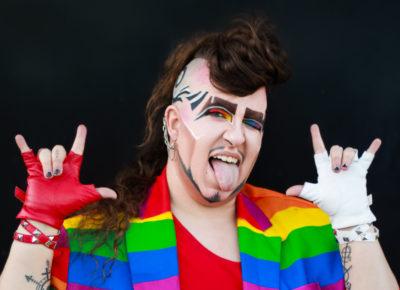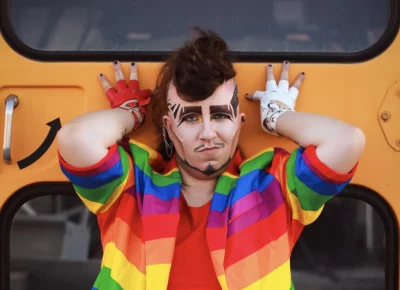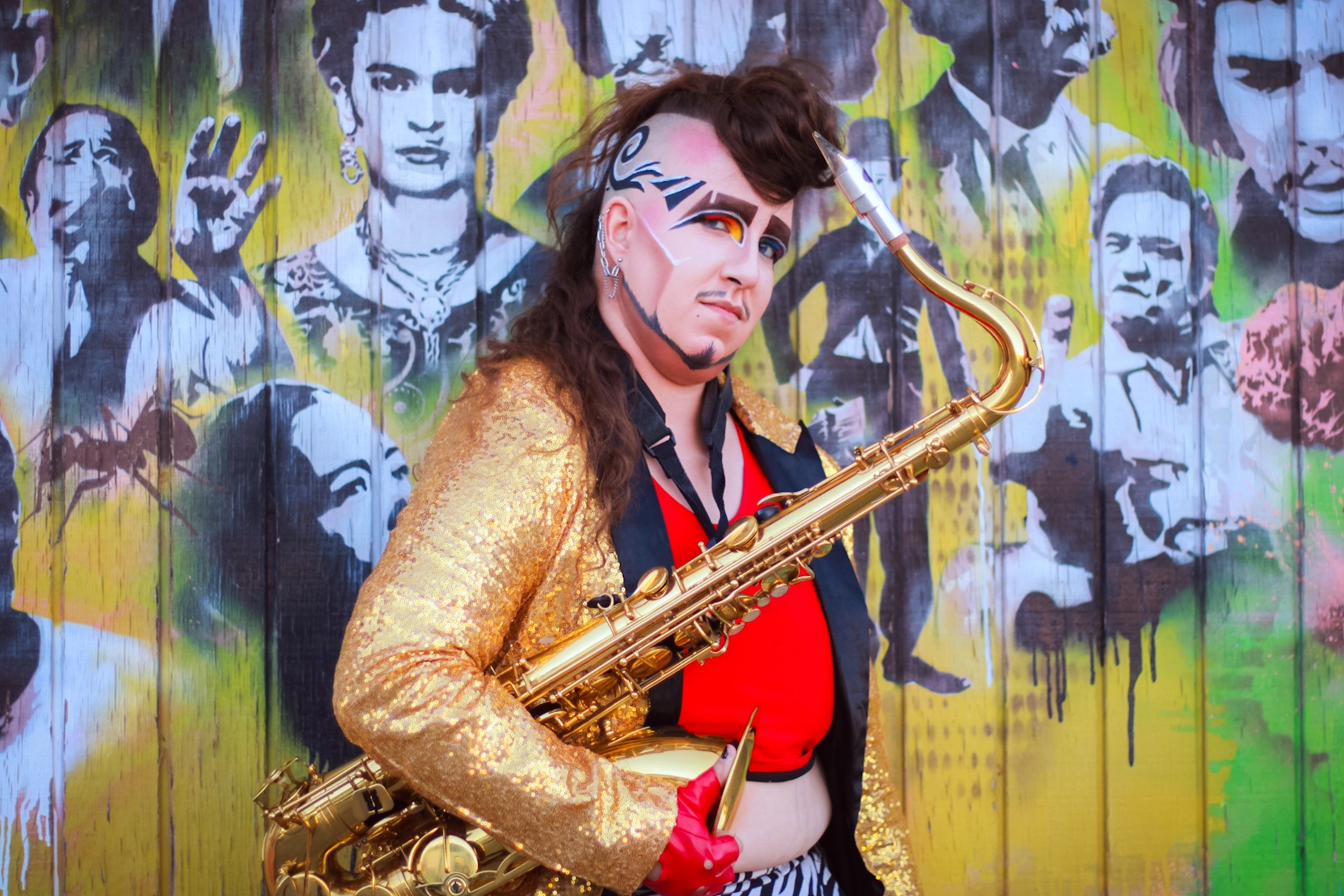
Bold & Beautiful: Notta Genda
Arts
In the lull of pandemic life, nonbinary drag king Notta Genda (they/he) found himself in the incubation period of artistic exploration. Like many others, Genda took to the screens and discovered “8-B!tch”—a digital drag show based out of Salt Lake City—which inspired them to embark on a self-expressive journey of their own.
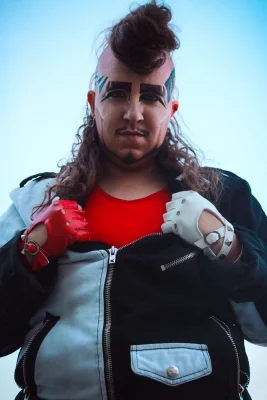
“I wanted to do more art and explore my queerness and my identity,” Genda says. Already a multifaceted artist with a background as a multi-instrumentalist and game developer, Genda started taking burlesque classes at The Salt Mine. They enjoyed the satirical aspect of burlesque and wanted to pair it with a more masculine art. “I drifted towards [being a] drag king, and then it just took off,” he says.
Genda says that when he first started performing in drag during the pandemic, there were approximately three other drag kings in the local community. Since then, the community has blossomed to upwards of 30 drag kings—performers whom Genda credits as his biggest source of inspiration.
“Almost all my friends are performers and artists,” Genda says. “We have a little drag polycule, [and] we just build each other up and support each other and learn from each other all the time.”
“I don’t fit the slim, perfectly machismo build that a lot of people would expect with masculinity.”
As a current member of Those Bitches, Utah’s second-longest-running drag troupe, Genda explores a mix of rambunctious comedy and queer sensuality along with a dramatic reveal as the cherry-on-top during their performances. Or, as Genda puts it, “anything that is going to make everyone scream.”
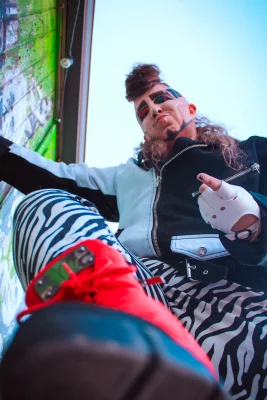
Genda said that they use their drag to critically assess what comes with attractiveness. “I don’t fit the slim, perfectly machismo build that a lot of people would expect with masculinity. But I change the frame and the context of it to empower myself with these traits that I have,” they say.
“As a transmasc person, I get dysphoric over a lot of things that are femme-coded.”
Genda’s audiences have commented on the body positivity present in his drag and the effect that it has had on their own senses of identity. “A lot of [my drag is about] expression in general—just getting people to think differently about expression,” he says.
As a transmasculine person, drag has not only served Genda as a creative outlet, but also a therapeutic one. “I’ve used drag to get through a lot of my self-expression,” they say. “As a transmasc person, I get dysphoric over a lot of things that are femme-coded, [but the] things that I’m perceiving as femme-coded [are] taught [perceptions].”
As an exercise in unlearning these perceptions, Genda has incorporated feminine aspects into his drag performances. One of his shows was centered around the color pink. They also performed in a dress for the first time this year. “Not only do I get a place to express myself and try to inspire others to express themselves, but I also get my own release. It’s for me and my development,” they say.
“It’s more important [now than] ever that we have silly, expressive artists being very visibly queer.”
Genda doesn’t shy away from political drag either, especially in times as politically tumultuous as these. Genda has spoken on the local radio show KRCL about anti-drag legislation and performed for Episcopalian queer transgender camp Camp Tuttle during summers. “[If] I have no control over my local legislation, at least I can perform about it,” he says.
Last spring, Genda took their drag on a college tour to the University of Utah and Westminster University as well as at a fundraising event in support of transgender BYU students. The show at the University of Utah was put on by fellow drag performer and close friend of Genda, Hysteria.
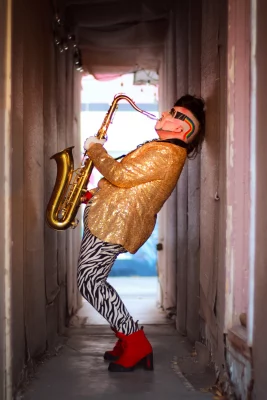
“I think it’s really important that drag is visible to youth—to queer youth especially,” says Genda. “Trans drag artists [show young people] that you can grow up here [as] trans and you can find a life and find your art and still have a platform—and [that] can’t be taken away from us.” Genda points out that Utah’s LGBTQ+ suicide rate is the highest in the country. “It’s more important [now than] ever that we have silly, expressive artists being very visibly queer.”
In addition to these events, Genda is involved in Those Bitches’ annual fundraiser, which happens just before Thanksgiving and last year raised enough money to pay for a community member to get top surgery. They also support Genderbands, an organization that helps transgender individuals pay for transition-related costs, through performances. “Grassroots, trans surgery support. I’m very involved in that sort of thing,” says Genda.
When asked about his drag dreams, Genda doesn’t name any besides wanting to continue what he is already doing. “I’ve kind of achieved what I set out to achieve,” they say. “I’m honestly really happy with what I do here and what I am.” Rather than get hung up on the constant pursuit of fame and relevance that comes with being a performer, Genda looks back with pride on how far he’s come since he began his journey. “Looking at my drag when I started is abysmal—I’m like, ‘Dang baby king, you came really far!’ I’ll always be working on myself and perfecting my art,” he says.
You can follow Notta Genda on Instagram at @notta_genda or see them perform with Those Bitches at Club Try-angles on the last Wednesday of every month. You can also support local transgender community members by donating at genderbands.org.
Read more Bold & Beautiful features:
Bold & Beautiful: Cherry Poppins
Bold & Beautiful: Jenna Tea
